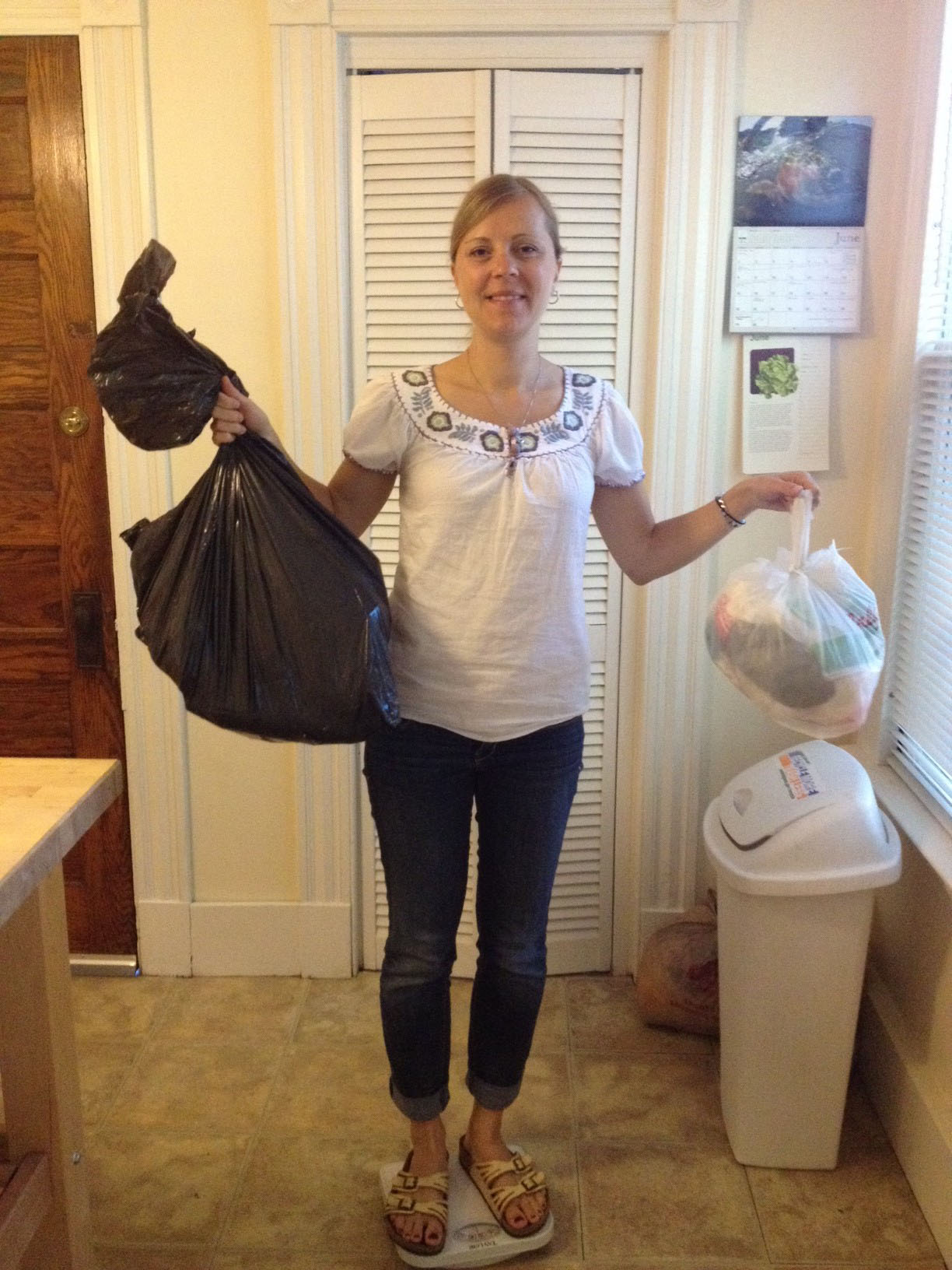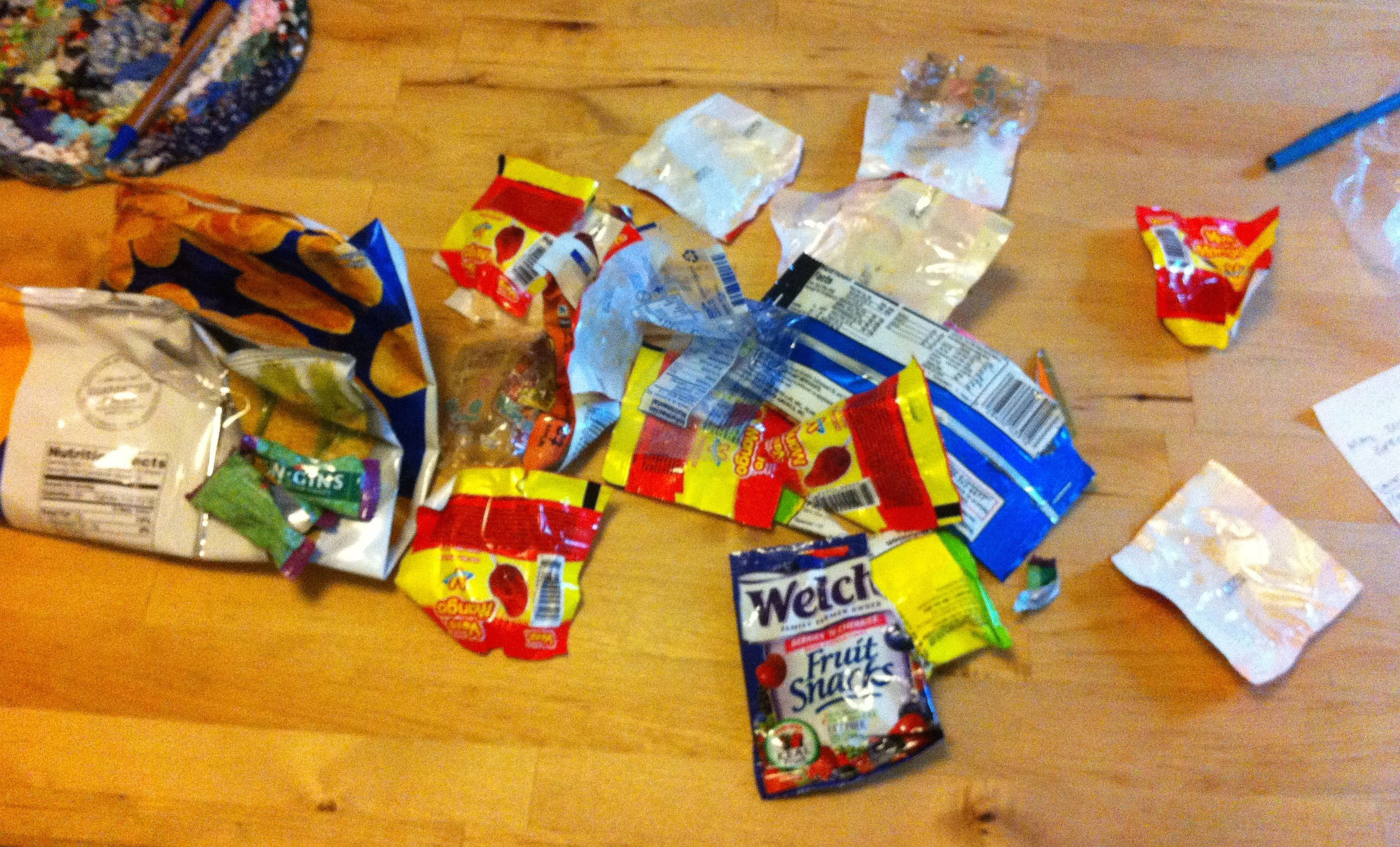For Earth Day this year, we Sustainable America staff members decided to challenge ourselves to work on ways to be greener in our everyday lives. Inspired by a mantra from our friends at the Natural Resources Defense Council, “Greening is a journey, not a destination,” we each chose an area to improve upon, from composting to eating less meat.
Today we hear from Katrina, our director of programs, who set the ambitious goal of achieving a zero-waste home. “These past few months a lot of my work has focused on zero-waste. Zero-waste events, zero-waste stadiums, business support and the like,” she wrote in April. ‘”It is one thing to do this in public spaces, and another to do it at home. For one month my husband and I are going to get our hands dirty and see what it means to try and achieve zero-waste at home.”
Here’s What Happened:
Zero-waste as defined by the Zero Waste International Alliance (ZWIA) means diverting a minimum of 90% of waste from landfill and incineration. So, how’d we do? Of the 101.5 pounds of waste we generated from May 2 to June 2, we recycled 67.5 pounds, composted 23 pounds, and sent 11 pounds to the landfill. That’s an 89.2% diversion rate. Not exactly 90% but pretty darn close!
Here’s how we got so close and why we fell a little short.
Zero-Waste Strategies: What Worked
 Recycling: My husband and I have been avid recyclers for a long time, but in order to reach our goals, we had to step it up a notch. Where we live we have a comprehensive single-stream recycling system, which accepts all plastics #1-7, all glass including vases, paper juice and milk cartons and even shredded paper.
Recycling: My husband and I have been avid recyclers for a long time, but in order to reach our goals, we had to step it up a notch. Where we live we have a comprehensive single-stream recycling system, which accepts all plastics #1-7, all glass including vases, paper juice and milk cartons and even shredded paper.
Having such a comprehensive system certainly made our job a lot easier, but we still had to figure out solutions for some of the more pesky items like plastic bags and film, candy wrappers and chip bags. For plastic bags, we first and foremost got better about remembering to bring our own bags to stores. We pre-loaded the car with reusable bags and stored compact reusable bags in each of our day bags. We also got more diligent about washing and reusing zip-top and veggie bags, something we would often get lazy about. For the remainder, we started collecting excess plastic bags and durable film alongside our recycling bin (we already have an overflowing storage container for plastic bags which we reuse as trash bags). Truth be told, we haven’t recycled these yet, but they will be taken to a grocery store for recycling soon. My husband’s school also hosts a Terracycle collection bin for chip bags and candy wrappers, which they upcycle into products like pencil cases and backpacks. We started a separate collection bag for these items. This took care of a lot of our waste and left primarily non-durable plastics like the film on the top of your hummus container and miscellaneous items like plastic bread tabs.
Composting: Renting in a multi-tenant unit with a small, shared backyard made composting a challenge for us. When we lived in Boston, we utilized a great residential scrap pick-up service called Bootstrap Compost, but a service like that does not yet exist where we live. So, we considered our options for a compact, home-based system and settled on a worm bin. Luckily we were able to take one over from a friend who was moving. The bin most certainly served its purpose for this exercise, but we also quickly learned that managing a worm bin takes practice and skill. Conveniently, we are soon moving to a new apartment with a larger back yard where we are eager to set up a low-maintenance compost tumbler.
What Didn’t Work
The Seemingly Harmless Barbeque
The biggest setback on our path to zero waste was a seemingly harmless backyard barbeque. In late May we hosted around 30 people at our house for some good old fashioned grilling and fun. We set out a labeled recycling bin, handed out recyclable cups and paper plates (which are compostable) and utilized our regular silverware and serving ware for the remainder. Because we were composting in a worm bin we could not compost meat, bones or dairy, so those items quickly stacked up. Also, despite having a labeled recycling bin, without having bright or descriptive signage or someone monitoring the bin it quickly got contaminated and piled up with a combination of food, plastic and paper waste.
The day after the barbeque we got down and dirty and sorted what we could, but the farther we dug in, the grosser it got and we eventually gave up and called it a lesson learned. The day after the barbeque we had our highest volume of landfill trash, which set us back just far enough to not meet our goal.
Receipts, mesh vegetable bags and other wasteful items
When you undertake a zero-waste challenge you quickly become attuned to the number of single-use items in our waste stream that have no intended end-of-life plan. Items like receipts—which ATMs and some stores like Whole Foods allow customers to opt-out of—are technically recyclable, but they contain BPA, which has recently been identified as a cancer-causing agent. When receipts containing BPA are recycled, BPA can end up in products like paper towels and toilet paper, which is not a desirable outcome. Therefore, we chose not to recycle these…and they added up quickly.
Another item we had to rethink was pre-bagged onions, garlic, avocados and other items which are often sold in breathable mesh bags. While these are economical and probably well designed for the fruits and vegetables they hold, they are not recyclable or compostable, and are dangerous to land and marine animals if released into the environment. Other items such as thin plastic film food seals and microwavable food boxes (because they are lined with an anti-freezer burn agent) are among the other items we got stuck with. The answer to these last few items is of course to buy items in reusable fruit and vegetable bags or skip them altogether (which we started to do) and to make your own fresh and frozen foods. We have made inroads on the later, but have not yet eliminated convenience foods altogether. This takes time and dedication and is certainly not something one can usually do overnight.
As an additional note, maintaining zero-waste while traveling or on the go is quite challenging, and these numbers do not reflect what happened outside our home, where we tried our best but had significantly less control. Fortunately, many hotels, restaurants and public venues like airports and train stations are getting on board with zero-waste principals and programs making it increasingly easy to keep it up while on the go.
We are very proud of what we accomplished but also acknowledge that we can do better, and we will. With a little more focus and dedication I am confident that we will reach and surpass our 90% goal — and we’ll be happier and healthier as a result.
With the average individual disposing of 4.4 pounds of waste per day, every little bit that you can do counts. If you are new to the game, begin by doing a home waste audit to gain a better understanding of what you are currently throwing away and then brainstorm opportunities for diversion like removing the item from your shopping list, recycling, composting or reusing the items. Then set your goal and get to work! Good luck!
RELATED ARTICLES
Staff Challenge: Grow More Food!
Cooking for One with Zero Waste
3 Steps to Recycling More at Work
